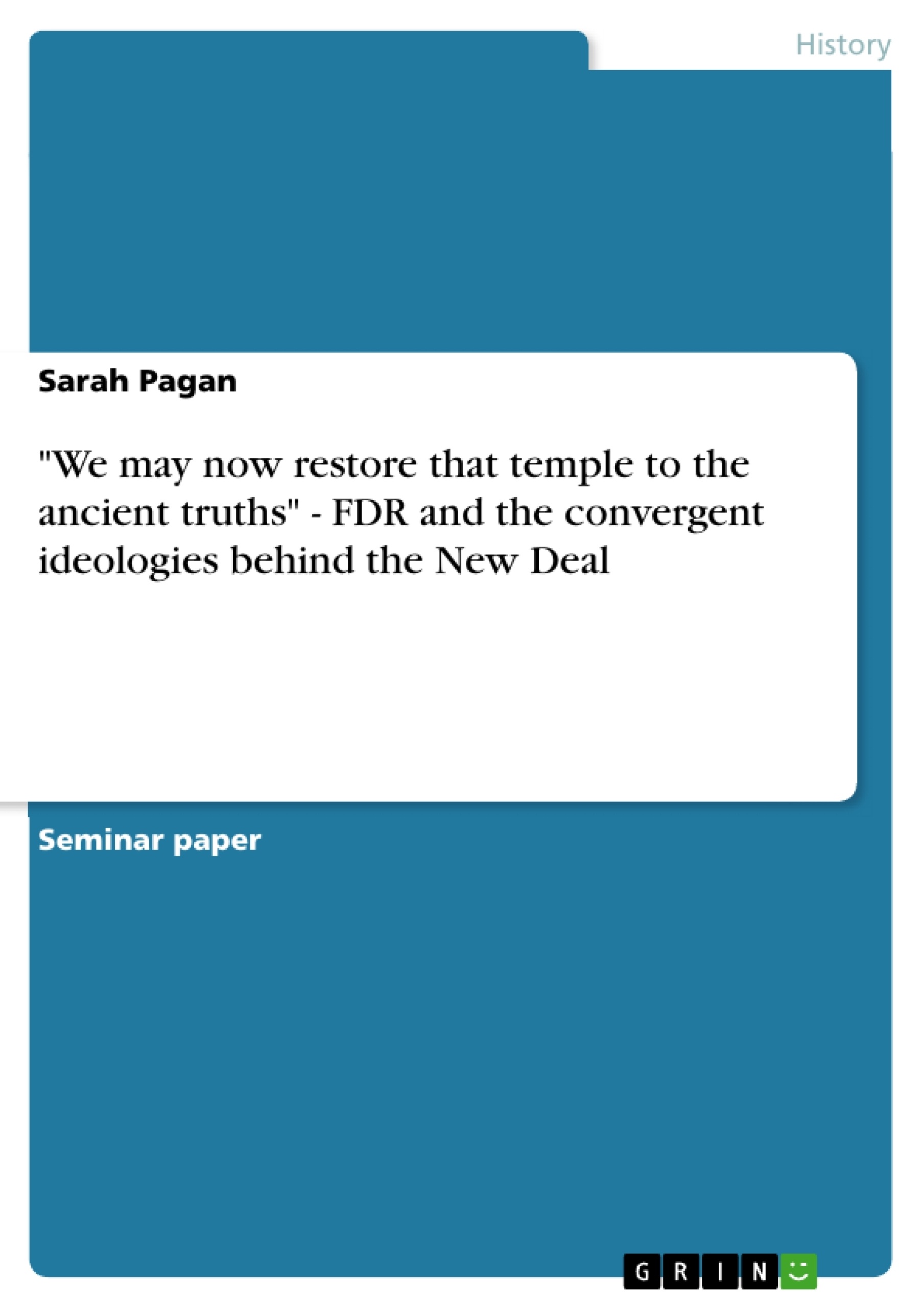My paper will trace the era of the 32. President of the United States of America, Franklin
Delano Roosevelt (FDR)1, Member of the Democrats, who introduced the president as an
active and representative member of the government. His presidency (1933-1945) had a
duration of three terms, and part of a fourth term. He emerged as the Great Depression and
the banking crisis had reached their peak. America was in need of governmental
intervention. Whilst the Hooverian times can be cited as having stood under a rather
diffident administration, the FDR era signifies a shift towards activeness of the executive
branch in terms of decision making and the initiating of laws. Roosevelts' presidency is in
so far one of the most significant in the history of the American presidency, as this
administration would overcome certain historical concepts, that had often before proven to
be problematic. There were issues such as the strict separation of powers and the Congress'
domination over the White House which were seen upon differently 1947, when Truman
took over the presidency from FDR, than in 1932, before Roosevelt was elected.
This transformation through Roosevelt's administration has its foundation in many
aspects. It overcame problematic historical concepts such as the strict separation of powers
and the Congress' domination over the White House and changed it for good. Also FDR
gave a new meaning to agenda setting and managed to define a new president-to-citizenrelationship,
making use of news media and radio to directly communicate to the people
whilst before him the president and his personality played a minor role in this office.
But the most important action Roosevelt took was initiating the „New Deal“,a
concept which contains so many levels, that they can hardly be outlaid in total in this term
paper. It is a complex and disputed topic that is in some points even held vaguely, countless
books have been written about this era and viewed it from historical, legal, institutional,
even psychological aspects.
Table of contents
I.Introduction
II.Governmental takeover
II. 1. Hoover: the diffident predecessor
II. 2. Elections 1932
III.New Deal: the reforms
IV.Intellectual Governing and a collective dynamism
IV. 1.Franklin D. Roosevelt - a political theorist?
IV. 2.,,Brain Trust“, the discordant group behind FDR
V.Conclusion
VI.Attachements:
Figures
List of figures
References
- Citar trabajo
- Sarah Pagan (Autor), 2011, "We may now restore that temple to the ancient truths" - FDR and the convergent ideologies behind the New Deal, Múnich, GRIN Verlag, https://www.grin.com/document/209146
-

-

-

-
¡Carge sus propios textos! Gane dinero y un iPhone X. -

-
¡Carge sus propios textos! Gane dinero y un iPhone X. -

-
¡Carge sus propios textos! Gane dinero y un iPhone X. -

-
¡Carge sus propios textos! Gane dinero y un iPhone X. -

-
¡Carge sus propios textos! Gane dinero y un iPhone X. -

-
¡Carge sus propios textos! Gane dinero y un iPhone X. -

-
¡Carge sus propios textos! Gane dinero y un iPhone X.

